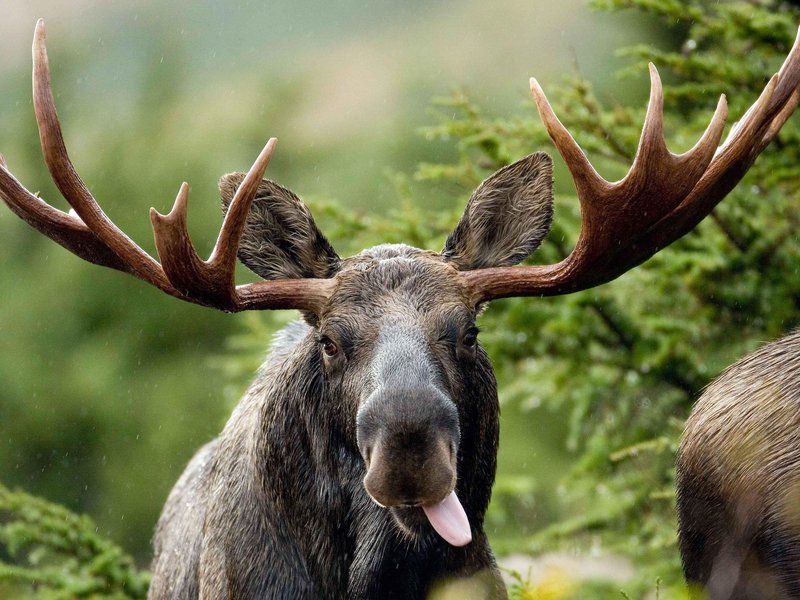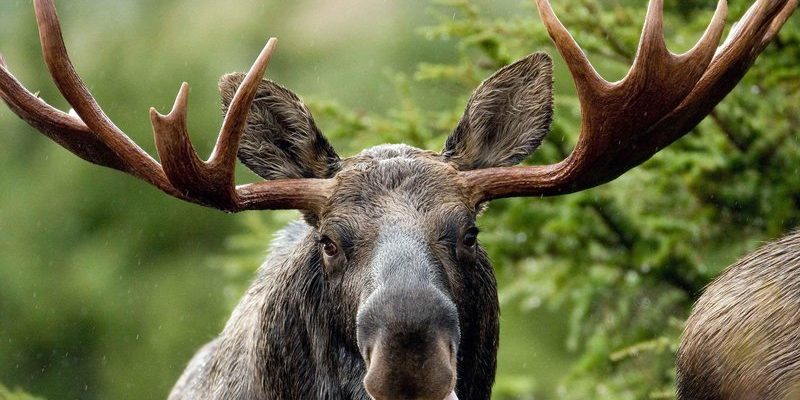
Imagine a world where every animal has a part to play. In this community, moose serve as both grazers and prey, influencing the health of their surroundings and providing food for various predators. They’re not just big vegetarians wandering through the woods; they contribute to the cycle of life in ways that are both remarkable and essential. Let’s dive into how these majestic mammals impact their ecosystems and why understanding their role is so important.
Moose as Herbivores: Shaping the Landscape
One of the most significant roles moose play in their ecosystems is as herbivores. They consume large amounts of vegetation, particularly aquatic plants, shrubs, and trees. By munching on these plants, they help control the growth of certain species, preventing any one plant from dominating the landscape. This process, often called “browsing,” is akin to a gardener regularly trimming hedges to ensure balanced growth.
Moose especially love to feast on willows, birch, and aspen trees. Imagine a landscaper who selectively removes some plants to encourage others to thrive. That’s basically what moose do, maintaining the biodiversity of their habitat. When they eat, they not only nourish themselves but also set off a chain reaction in the ecosystem. For instance, by clearing areas, moose create space for young plants to grow, offering new habitats for other wildlife.
Interestingly, studies have shown that the areas where moose browse often host a wider variety of plant species. So, when you see a moose in the wild, remember they’re not just munching on greens; they’re actively shaping their environment. The relationship between moose and the plants is a beautiful dance of give and take.
Moose as Prey: Supporting Predator Populations
While moose are often seen as solitary creatures, they’re an important food source for large predators like wolves and bears. This relationship illustrates the balance of nature, where every creature’s presence maintains the harmony of the ecosystem. Imagine a sports team: if one key player is missing, the whole game can change. Similarly, if moose were to disappear, it would create a ripple effect impacting predator populations.
Wolves, for instance, rely heavily on moose as a primary food source. When wolf populations thrive, it’s often a sign that moose are doing well, and vice versa. When moose are abundant, predators can find sufficient food, which helps maintain their population. This balance creates a healthy ecosystem, allowing for genetic diversity among both moose and their predators.
However, if the moose population dwindles due to overhunting or habitat loss, predators may struggle to survive. This dynamic relationship highlights the interconnectedness of species in the ecosystem. A dip in the moose population could mean less food for wolves and bears, which might then lead to a dramatic shift in the ecosystem.
Moose and Climate Change: A Shift in Habitat
As climate change impacts the world, moose find themselves at a crossroads. These creatures have adapted to cold climates with thick fur and a natural resilience to the chill, but rising temperatures can challenge their survival. Picture a plant that thrives in one climate but struggles in another: that’s moose in a warming world.
With changing weather patterns, moose may find it harder to seek out food. Warmer temperatures lead to increased insect populations, like ticks, which can severely affect their health. An overabundance of ticks can lead to fur loss and anemia in moose, impacting their strength and reproductive success. Just think about how a person feels when they’re run down by a cold; moose face a similar struggle when overwhelmed by parasites.
Moreover, as their habitats shift, moose may move to higher elevations or more northern territories. This shift can cause conflicts with human activities, such as agriculture and urban development. In turn, the changes can disrupt not only the moose population but also the entire ecosystem, highlighting how sensitive these connections are.
Moose and the Water Cycle
Moose play a surprisingly important role in the water cycle. As they wade through wetlands and streams, they not only find food but also help maintain the health of aquatic ecosystems. Think of them as nature’s gardeners, fertilizing the water through their droppings, which enrich the soil and promote plant growth.
Their occasional stomping through muddy areas helps create channels that improve water flow and aeration in the soil, leading to healthier wetlands. Healthy wetlands are crucial for many smaller species, providing habitats for fish, amphibians, and birds. Without the presence of moose, these habitats might struggle, causing declines in these species.
By supporting these ecosystems, moose help maintain biodiversity, which is vital for a balanced environment. The plants that thrive in these areas also play a role in filtering water and preventing erosion. So, each time a moose moves through its habitat, it’s part of a bigger picture that supports countless other life forms.
Conservation Efforts: Protecting Moose and Their Ecosystems
Given the vital role moose play, conservation efforts are crucial to maintaining their populations and habitats. Organizations and wildlife agencies work tirelessly to protect moose through various initiatives. This might include creating protected areas, implementing hunting regulations, and promoting public awareness about the importance of moose in our ecosystems.
One effective approach is the establishment of wildlife corridors. These corridors allow moose to move safely between habitats, helping them adapt to changing environments and find food sources without running into roads or urban development. Imagine a highway designed just for animals – that’s the idea!
Public education is another key aspect of these conservation efforts. By raising awareness about the role of moose, communities can foster a greater appreciation for these majestic creatures and the ecosystems they support. Simple actions, like reducing vehicle speeds in moose habitats or supporting local conservation groups, can make a big difference.
The Cultural Significance of Moose
Beyond their ecological roles, moose have deep cultural significance for many communities, especially in northern regions. They’re often celebrated in local folklore, art, and even cuisine. For indigenous peoples, moose represent sustenance and connection to land. Their hides can be used for clothing, antlers for tools, and meat for food.
In many cultures, moose symbolize strength, endurance, and the wild spirit of nature. This cultural reverence reinforces the need to protect moose populations, ensuring future generations can enjoy and learn from these incredible animals. When a community values its wildlife, it’s more likely to protect that wildlife – and that includes the moose.
Moose also attract Ecotourism, providing economic benefits to local communities. People travel from far and wide to catch a glimpse of these majestic animals, boosting local economies through responsible tourism.
Moose are much more than just large animals roaming the forests; they are integral components of their ecosystems, supporting a complex web of life. From maintaining plant diversity and supporting predator populations to influencing the water cycle and embodying cultural significance, their presence is vital.
As we face environmental challenges such as climate change and habitat loss, understanding and protecting moose becomes crucial. Every effort to preserve their habitats and educate communities has a ripple effect, benefiting not just moose but countless other wildlife species. Together, we can ensure that these remarkable animals continue to thrive, contributing to the health of our ecosystems for generations to come. So, next time you hear about moose, remember the vital role they play—it’s not just about their size; it’s about their impact on the world around us.

